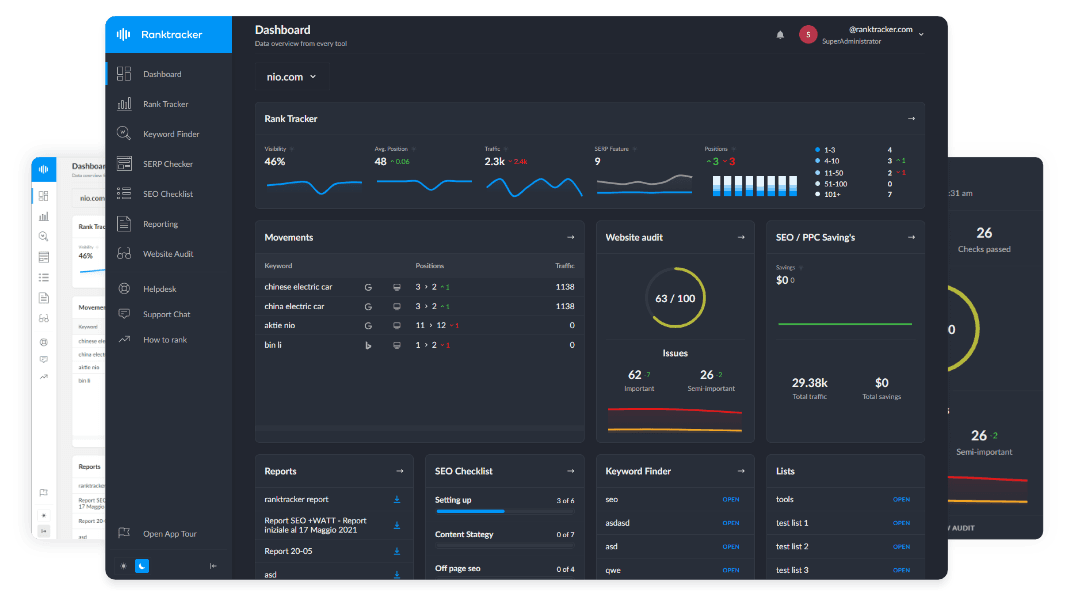Intro
In today's competitive hiring landscape, a professional portfolio website is more important than ever. It helps you boost your online presence and raise awareness about your skills, offerings, and expertise all in one place.
This article will explore portfolio websites and six elements you should consider including in yours if you want to boost your online presence.
What is a portfolio website?
A portfolio website is a digital space that showcases your best work, demonstrates your skills, and provides evidence of your experience to a global audience.
It is essentially an online pitch to potential clients, customers, or employers, who should be able to easily find your portfolio website on search engines and social media. In one centralized space, a portfolio website shows them who you are, what you do, why you are valuable to them, and how they can contact you.
Many web hosting companies, such as Hostinger, allow you to build a portfolio website in just a few steps, with each catering to different industries and budgets. In addition, most require no technical expertise as they use artificial intelligence (AI) to create templates and generate text.
6 elements to include in your portfolio website
A home page introduction
Your home page should include a well-written, truthful, and engaging introduction about you, your education, your experience, and what you do. This will give prospects context about who you are, which helps build a personal connection.
Your introduction should be:
- Professional. Ensure there are no spelling errors or grammar errors in any of the text on your portfolio website, including your introduction. Use a tool such as Grammarly if you need help with spelling and grammar.
- Targeted. Your introduction should speak to those you want to work with, not everyone. Target the introduction towards clients, customers, or employers in your industry.
- Client-focused. Don't talk all about yourself. Instead, prove how you can help the client, customer, or employer. This includes what you can do for them, what's in it for them, and how you have helped similar clients in the past.
Your introduction should also show off your personality. Potential clients, customers, or employers want to get a sense of who you are as a person (not just as a professional) and what you do outside of work.
In addition, your home page should also include a call to action (CTA) that guides visitors to other sections of your portfolio website, such as your best work or your contact information.
The All-in-One Platform for Effective SEO
Behind every successful business is a strong SEO campaign. But with countless optimization tools and techniques out there to choose from, it can be hard to know where to start. Well, fear no more, cause I've got just the thing to help. Presenting the Ranktracker all-in-one platform for effective SEO
We have finally opened registration to Ranktracker absolutely free!
Create a free accountOr Sign in using your credentials

Your best work
It's pretty evident that any successful portfolio website will include information about and links to your best work. This section, which you could title 'Projects', ‘Portfolio’, or 'My Work', is the heart of your website, as it gives prospects a visual insight into your skills and experience.
For each piece of work, you should provide a detailed description, including the project's requirements, the tools, strategies, and technologies used, and the challenges faced and how you overcame them.
In addition, each piece of work should be supported by an engaging visual, such as a picture, screenshot, infographic, video, or live demonstration. This captures the attention of prospects and helps them to understand your work better. Just ensure any visuals are high-quality and relevant to the work samples.
Remember that your portfolio website is not an archive of all the work you've ever completed. Think about quality over quantity and only put your best work forward.

About me
Your 'About Me' page gives you a chance to expand on your introduction and humanize your portfolio, allowing prospects to connect with you on a more personal level.
Here are some things you should tell potential clients, customers, and employers about yourself:
- Professional journey. Share information about how you got where you are today. This includes information on your education (did you go to University? If so, which one?), any internships or graduate programs, and any past job roles.
- Skills. List any of your technical or transferable skills that are relevant to the industry you are in. For example, if you are trying to get work as a graphic designer, list which tools you are experienced with, such as Adobe Photoshop and Affinity Designer.
- Hobbies and interests. Whilst you might have included some out-of-work hobbies and interests in your introduction, this section is the chance to expand on these and add personal stories that make your profile more memorable to prospects. Having similar interests or hobbies could even help you form a better connection.
In addition, your 'About Me' page should feature a high-quality photo of yourself. Just ensure that you consider what type of prospect you're trying to connect with or impress and how they might perceive you based on your photo.
The All-in-One Platform for Effective SEO
Behind every successful business is a strong SEO campaign. But with countless optimization tools and techniques out there to choose from, it can be hard to know where to start. Well, fear no more, cause I've got just the thing to help. Presenting the Ranktracker all-in-one platform for effective SEO
We have finally opened registration to Ranktracker absolutely free!
Create a free accountOr Sign in using your credentials
For example, a law firm might prefer a professional headshot where you are dressed smartly, while an animal charity might enjoy a photo that shows you smiling next to a dog.

CV
While your portfolio website is a Curriculum Vitae (CV) in itself, having a downloadable CV is a professional touch that many clients, customers, and employers appreciate. This shows your prospects all your experiences, skills, and past work in one place.
Your downloaded CV should have headings and bullet points for easy readability, be typed in a clear font such as Arial or Times New Roman, and maintain a consistent format throughout.
Just remember to keep your CV updated with your latest experience and projects, focus on the skills most relevant to the jobs you are seeking, and use a professional format that is easy to read and well-organized.
Case studies or success stories
If you have worked for clients, customers, or employers in the same industry in the past, you can create a case study or success story. This will prove that your skills and expertise can shield positive results.
This section should focus on how your past clients, customers, or employers benefited from hiring you so that future prospects can see how they will benefit.
The All-in-One Platform for Effective SEO
Behind every successful business is a strong SEO campaign. But with countless optimization tools and techniques out there to choose from, it can be hard to know where to start. Well, fear no more, cause I've got just the thing to help. Presenting the Ranktracker all-in-one platform for effective SEO
We have finally opened registration to Ranktracker absolutely free!
Create a free accountOr Sign in using your credentials
The type of case study or success story you write for your portfolio website will depend on the industry you work for, but it should typically include:
- Information about the client. For example, what industry they are in, what work they do, and who their target audience are.
- What the client asked you to do. For example, 'I need you to increase our Instagram following by 40% in the next four months'.
- The challenges you faced. For example, did they give you a low budget or tight turnaround time?
- Your strategy. For example, what marketing campaign did you use to boost the client's Instagram following?
- The results. For example, use metrics such as 'this company had a 41% rise in Instagram followers within four months' to show how you succeeded.
Contact information
In order to get a job offer or connect with a customer or client, it must be easy for prospects to get in touch with you. The best way to ensure this is to have a clear contact information page on your portfolio website.
Provide information like your full name, email address, phone number, location, and links to any professional social media profiles you have. Social media links encourage prospects to connect with you on other platforms like LinkedIn, Instagram, X (formerly Twitter), and Facebook.
As well as a contact information page, you can place contact details and social media links in your website's footer.
Ready to boost awareness with your portfolio website?
A well-crafted portfolio website, built with these six essential elements, can significantly boost your online presence. This will help more potential clients, customers, and employers in your industry find you, which will increase your likelihood of getting work and help you stand out in the competitive UK job market.
A well-crafted portfolio website, built with these six essential elements, can significantly boost your online presence. This will help more potential clients, customers, and employers in your industry find you, which will increase your likelihood of getting work and help you stand out in the competitive UK job market. All of these factors, together with a captivating design will help draw prolonged attention to your portfolio website. For web design insights and inspiration, visit here to learn more.

